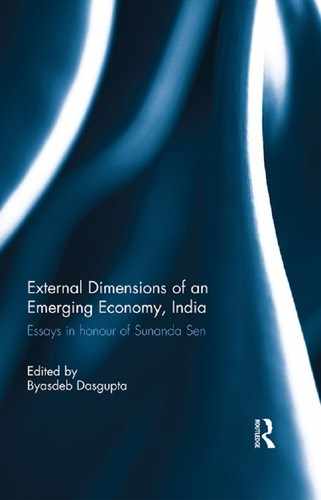Book Description
This book offers an analysis of external dimensions of an emerging economy, India, in the backdrop of neoliberal globalisation. External dimensions of Indian economy signify her inter-relation with the rest of the world in terms of trade and financial flows and how that affects the development process within the country in the age of neoliberal globalisation. It is based on non-mainstream unorthodox approach in Economics and as such is a critique of the mainstream neoclassical position on current neoliberal globalisation.
The contents of the book can be classified into as follows – (1) India’s external dimension in the colonial period through the trade route ; (2) concerns with India’s balance of payments transactions in terms of illegal flows, (3) political economy of development planning in the present era of globalisation, (4) capital flows as it affect the India’s external front, (5) Indian industries under the TRIPs regime, (6) regional economic integration of India and (7) foreign capital flows in India during the liberalisation period. The entire book is an attempt to decipher the meaning and significance the process of globalisation produces for the real economy of India.
The uniqueness of the book is that in one place one can find different unorthodox positions dealing with the external dimensions of emerging India, which cannot be found in any other book.
Table of Contents
- Cover
- Half Title
- Title Page
- Copyright Page
- Table of Contents
- List of figures and tables
- Notes on contributors
- Acknowledgements
- Introduction
- 1. India, the Great Depression and Britain’s demise as world capitalist leader
- Introduction
- The dependence of the international payments pattern on colonial and, in particular, on India’s export earnings
- Modifying the relation between budgetary, trade and savings–investment balances to take account of transfers from colonies to the metropolis
- The sharply declining magnitude of export earnings of the Indian sub-continent owing to agricultural depression
- Notes
- References
- 2. Illegal flows in India’s BOP accounts: their components and impact on the economy
- 3. Some aspects of external dimensions of the Indian economy in the age of globalisation
- Degree of openness of the Indian economy
- Some features of India’s balance of payments in the post-reform period
- Foreign capital flows in India during the reform period
- Net transfers of financial resources from India during the reform period
- Some concerns regarding India’s economic reforms
- Conclusion
- Notes
- References
- 4. Macroeconomic policy within cycles of international capital flows: the Indian experience
- 5. Multinationals and monopolies: the pharmaceutical industry in India after TRIPS
- 6. Regional economic integration: new context and analytical constructs
- 7. Political economy of development planning and reforms in India: evolution of the Plan philosophy over the years
- Index
